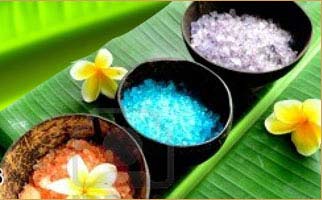 |
Botanical Name |
: |
Triticum vulgare |
 |
Common Name |
: |
Triticum sativum, Common Wheat, Bread Wheat |
 |
CAS # |
: |
68917-73-7 |
 |
Plant Parts Used |
: |
Germ (kernel) |
 |
Extraction Method |
: |
Cold Pressed |
 |
Color & Odor |
: |
Dark brown / Honey colored very thick liquid with
strong odor |
Description :
A tufted annual grass of 60-150 cm height, stems hollow, tufted and erect.
Leaves are very long and narrow with lingule and auricles.
Constituents & Specifications :
Wheat germ oil has various chemical compounds that include lecithin,
squalene, linoleic, oleic, palmitic and stearic fatty acids.
Properties :
It is Anti-oxidant, nervine, purgative, relaxing, rejuvenating , tonic
(skin, liver). It is excellent moisturizer , anti-oxidant and very
nutritious. It regulate cardiovascular, immune, nervous, reproductive
systems and to maintain healthy cells and body functions.
Benefits & Uses :
- Wheatgerm oil is a perfect addition for massage oil or for preparing
carrier blends. In beauty, skincare, and aromatherapy, wheatgerm massage
blends assist in promoting circulation and formation of new cells. It
will help in revitalizing skin and repairing damaged tissues
- Wheat germ oil consists of the gluten which is used in the
preparations of number of products including baked goods, breakfast
cereals, meat, fish and poultry products, pasta, pizza, snack foods,
tortillas, batter mixes and coatings.
- Wheat germ protein is used in shampoos and emollients. It has been
shown to be effective for the conditions like dry and cracked skin,
eczema, psoriasis, prematurely aged skin, stretch marks, dull
complexion, tired and overexerted muscles, sunburn and scars.
![]()
![]()



![]()
![]()